Feature
The Students Discover Project
Partnerships and Citizen Science in North Carolina Classrooms
Connected Science Learning April-June 2018 (Volume 1, Issue 6)
By Suzanne Branon, Sherry Booth Freeman, Lauren Bryant, LaTricia Townsend, and Malinda Faber
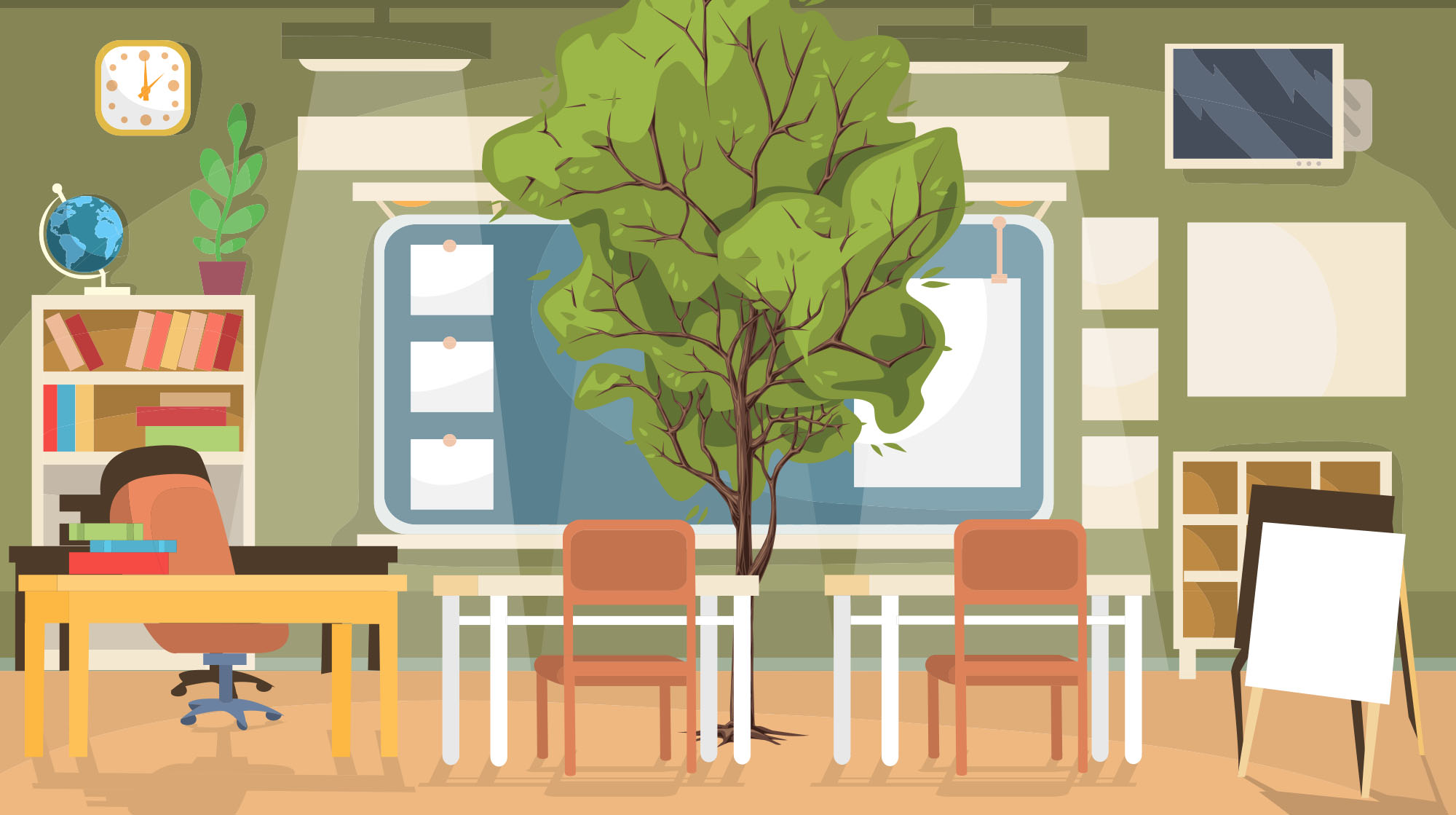
In North Carolina, 39% of eighth-grade students report that they “never or hardly ever” design a science experiment, and another 29% of eighth grade students report doing hands-on science activities only once or twice a month (NCES 2011). The norm in science education has been a focus on traditional teaching methods involving lectures, textbooks, and “cookbook” laboratory experiments, with an emphasis on memorization and recall of facts. At the same time, there has been a long-standing call for education reform that emphasizes the use of inquiry-based methods in science classrooms (NRC 2012; Trautmann, Shirk, and Krasny 2012). A growing body of evidence suggests that inquiry-based instruction rooted in the nature of science results in significantly higher student achievement with respect to content knowledge, reasoning, and argumentation skills (Abdi 2014; Riga et al. 2017).
The Students Discover project focuses on improving science instruction through hands-on, authentic scientific inquiry via citizen science projects in middle school classrooms. Students’ work through the project has supplemented scientific research on a range of topics, from the distribution of ant species in North America to the evolutionary history of mites.
As a result of participation in Students Discover, educators have reconsidered their teaching practices and experienced increases in confidence related to teaching science. Students are more engaged and have shifted their perceptions about scientists and the scientific process. Scientists have made discoveries through collected citizen science data and have become better science communicators.
| “It’s definitely built my confidence as an educator and a teacher leader, [and] helped me realize that I can break out of the usual rut of teaching, which is lecture; it pushed me to do more collaboration and to have my students collaborate more in class.” |
| “Participating in a teacher–scientist partnership helped me to open up STEM careers to my students, because they met the female scientist I worked with over the summer. She came into my classroom. … It’s opened my students up to more careers that some of them didn’t think to explore. Now I have female students that say, ‘Oh, I think I want to do that! I want to be a marine biologist, or study microbiomes.’ It’s opening up other careers where they see women in science.” |
| “The data we collected when we were implementing our citizen science project wasn’t so pretty. It looked a hot mess. And the kids thought, ‘I must be doing something wrong. This isn’t like what you taught us.’ But I told them, ‘It is. This is real science. And sometimes real science isn’t pretty. It changes. It’s not just made-up textbook stuff.’” |
| “My kids are really engaged in what they’re doing because they see something meaningful [and] hands-on, and they can ask questions to solve a problem.” |
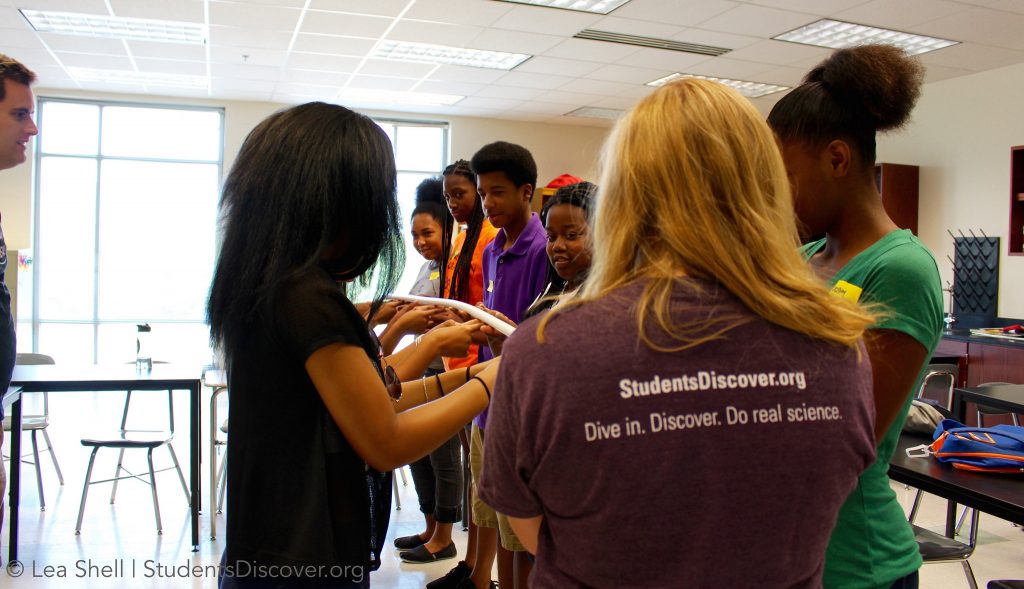
Doing real science: The Students Discover project
The overarching goal of the Students Discover project—funded by a National Science Foundation Math Science Partnership grant (NSF Award ID #1319293)—is to improve STEM education in middle schools by developing a model for engaging students with real science. Over the past three years, the project has brought together teachers, scientists, district leaders, and other institutional partners to facilitate the successful implementation of citizen science projects in the classroom. Project activities aim to create a context for student engagement with real, ongoing scientific research by making citizen science projects accessible to the formal classroom environment. Citizen science lessons are codeveloped by teachers and research scientists to allow students across North Carolina to participate in cutting-edge research through data collection, analysis, and digital communication.
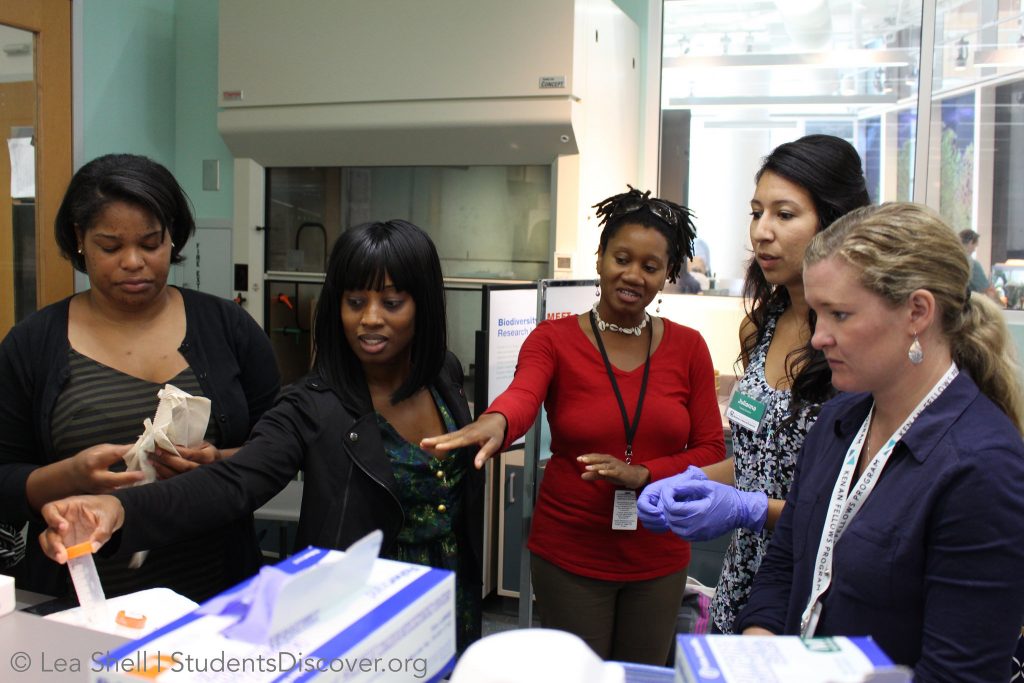
This collaborative process is intended to lead to long-term improvements in teachers’ content knowledge and instructional practice, accumulation of new data for scientists, student exposure to authentic scientific inquiry, and, ideally, increased student engagement. Other long-term project goals include:
- increased student enrollment in advanced STEM courses;
- improved science achievement;
- better models for engaging citizens and underserved youth in citizen science;
- better models for collaboration for scientists, schools, and the broader community; and
- fresh perspectives and positive institutional change at the partner organizations.
The partners for the Students Discover project include scientists at the Department of Biology at North Carolina State University (NCSU); the Nature Research Center at the North Carolina Museum of Natural Sciences;[1] the Kenan Fellows Program;[2] the Science House;[3] NCSU’s Friday Institute for Educational Innovation; several North Carolina School districts; and GrantProse Inc., the external evaluator for the project.
Teachers were recruited for this project through the Kenan Fellows Program for Curriculum Leadership and Development. To become a Kenan Fellow, North Carolina middle school teachers completed a rigorous application and interview process. Thirty-six teachers were selected to participate as Kenan Fellows in Students Discover over a three-year period. Selected educators were given stipends for their participation in the program and its required activities, including pay for substitute teachers and local travel. The scientists for this project were employed by the Department of Biology at North Carolina State University and worked at the Nature Research Center of the North Carolina Museum of Natural Sciences—a partnership aimed at capitalizing on the academic strengths of NCSU sciences and the unique public platform of the museum setting.
Three key collaborators were the school systems of Wake, Alamance, and Pender counties, in which Students Discover employed one staff person to support implementation of the project. These three counties collectively account for more than 500,000 students in the state of North Carolina. District partners were engaged throughout the project, providing feedback, guidance, and support to teachers and partner institutions throughout the development and implementation processes.
Also crucial was NCSU’s Science House, which facilitates the education of teachers in communities around the state through professional development and training events. Using NSF Math Science Partnership grant funds, the Science House provided educators with materials for implementing citizen science projects through their online loan program. Teachers who participate in the Science House workshops and teach in the service area of any satellite offices are eligible to borrow equipment for use in their classrooms.
The Students Discover project ultimately sought to have scientists, teachers, and students work together in all stages of doing real science. At the core of the Students Discover effort was the annual partnership between 12 teachers and four scientists to create new citizen science projects and the lesson plans associated with them. This partnership was referred to as the externship experience, wherein teachers selected by the Kenan Fellows Program spent three intensive weeks at the North Carolina Museum of Natural Sciences (NCMNS) working with postdoctoral research scientists to develop citizen science projects and lessons that could be implemented in teachers’ classrooms. Three teachers from partner school districts were matched with one scientist in the museum’s labs. During the externship, the teachers worked side by side with the scientists, learning about their work and codeveloping citizen science projects and lessons for middle school students. This process took place every summer during the first three years of the grant, with 12 new teachers joining the four scientists every summer. The teachers came from schools that represented the socioeconomic, cultural, and racial diversity of the state.
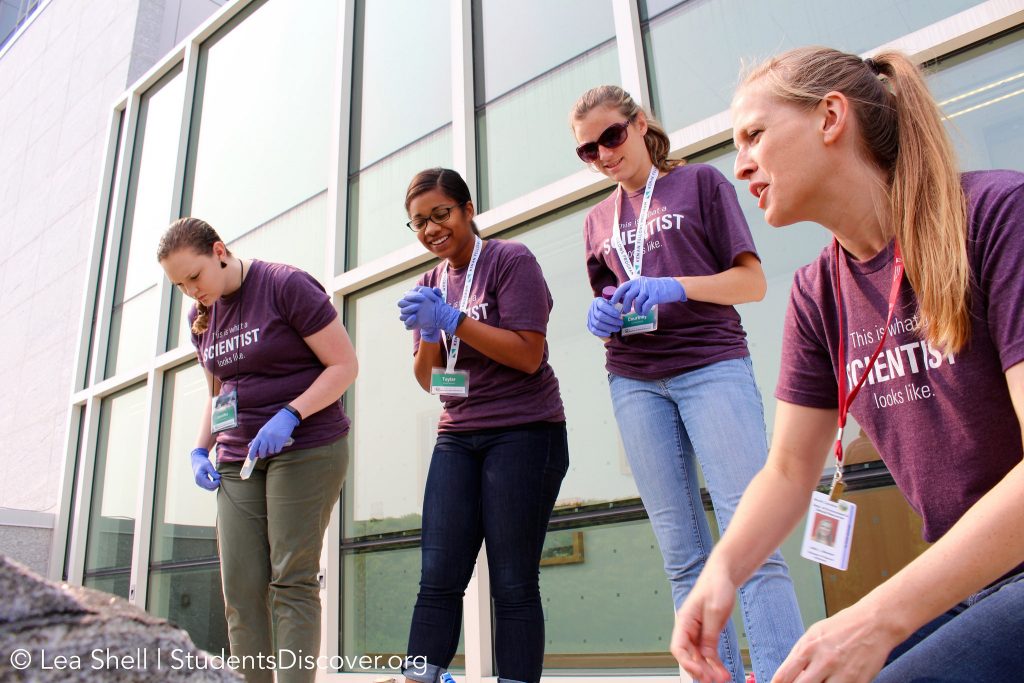
After their externship, teachers implemented the citizen science lessons throughout the school year according to the courses they taught, their students’ grade and preparation levels, their districts’ pacing guides, and the availability of resources and materials, among other school and classroom–level factors. The length of citizen science lesson implementation ranged from two days to three weeks, depending on the project, the teacher, and their students. Teachers executed their codeveloped lessons and remained in contact with their partner scientists to provide student–collected data, then submitted their updated lessons to the Students Discover team with any changes or adaptations they may have made based on their implementation experiences with students.
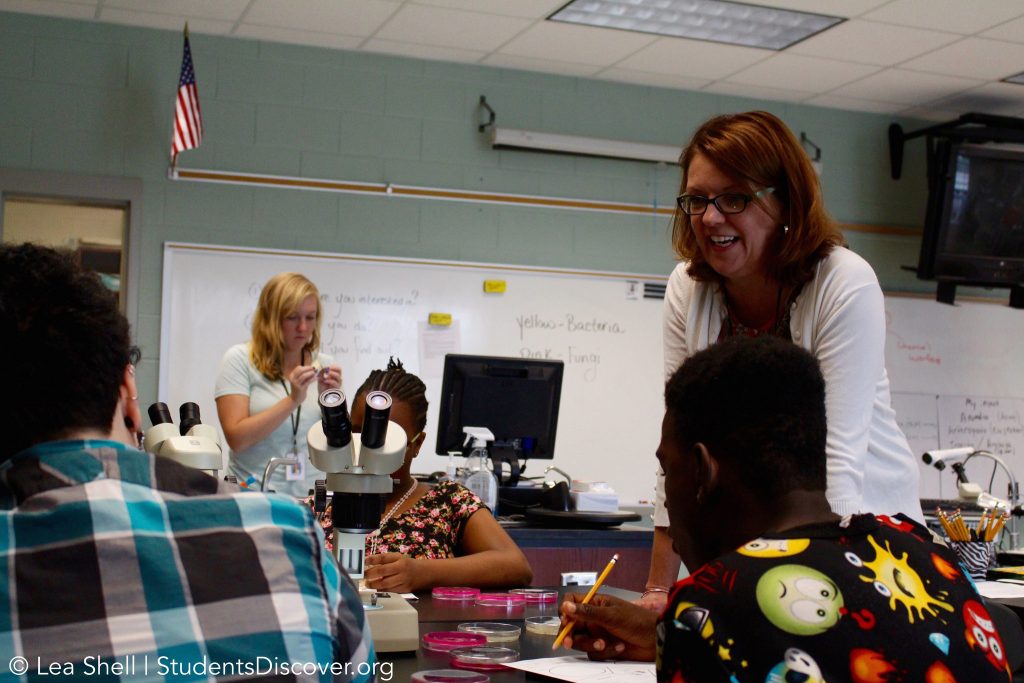
All of the scientists involved with the project visited their teachers’ classrooms at least once during the implementation process. While in the classroom, scientists spoke with students about their citizen science projects, answered students’ questions, and provided students with an overview of the broader areas of their research. Scientists also remained in contact with their partner teachers and students throughout the school year beyond lesson implementation via in-person school visits, video calls, emails, and social media interactions.
Following implementation, the codeveloped citizen science lessons were uploaded to the Students Discover website, which offers all the information developed through the project’s teacher–scientist collaborations free of charge to middle school science teachers around the world. Students Discover citizen science projects are available online for teachers to access, download, and complete with students (as scientists associated with these projects are still accepting data to further their research). Online citizen science classroom projects and lessons available through the website also include adherence to Common Core and Next Generation Science Standards, material lists, photos, handouts, rubrics, and supportive content and extension materials for educators.
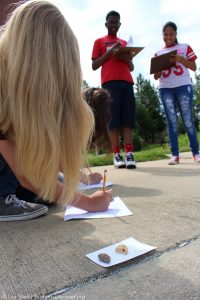
One example of a Students Discover classroom project is Ant Picnic. Since 2011 scientists in Rob Dunn’s lab at North Carolina State University have been asking the question, “Which ant species live where?” and citizen scientists have answered by collecting ants in their backyards and school yards and mailing them to the lab. As part of Ant Picnic, students learn about the major food groups and explore the diet preferences of ants. Students set out prescribed ant food baits, collect the baits, count the ants present at each bait, and share the data with a scientist. The data students collect contribute to a large database that contains data collected by students from all over the world who are doing the same experiment. Scientists then use the data to explore regional and global trends in ant food preferences to learn about more complex issues like climate change.
Another Students Discover citizen science effort involved the study of mites. The study revealed that the evolutionary history of mites, taken from the heads of teachers, reflects our own evolutionary history, often in more detail than our own genes do. This has been a major discovery and has opened up an entirely new field of research on the mites that can be credited to this work with students (Thoemmes et al. 2014).
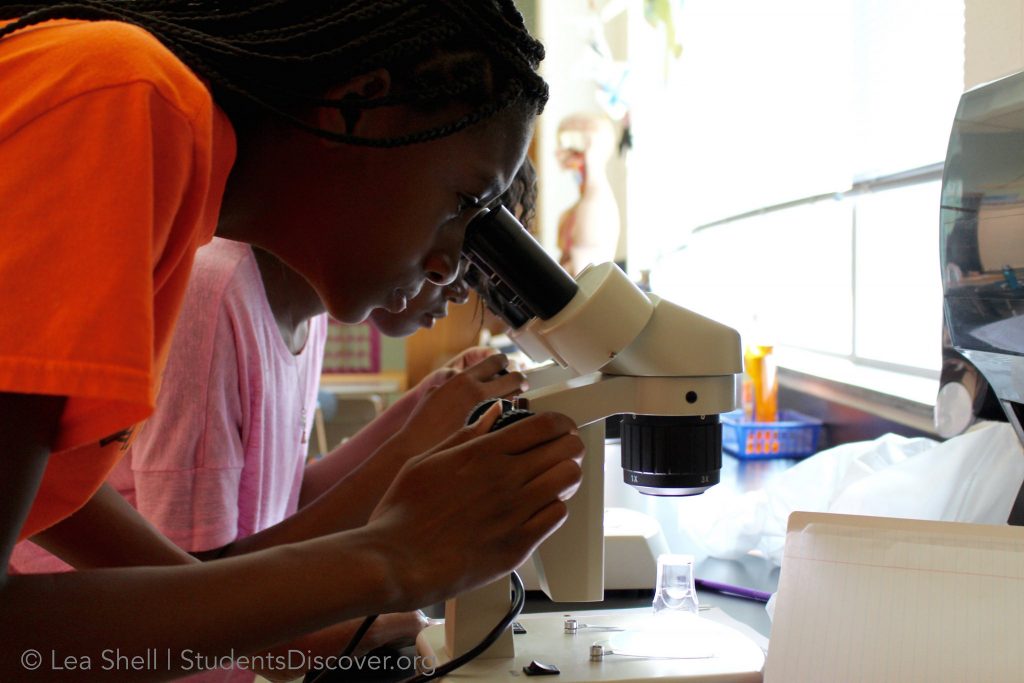
Through Students Discover, teachers and students also studied the microbiomes of dandelions and the extent to which they varied between regions and climates. Citizen scientists discovered that dandelions do not vary; the dandelions are able to recruit the same beneficial root microbes wherever they live. Project scientists are now exploring the value of these microbes to crop plants (McKenney et al. 2016).
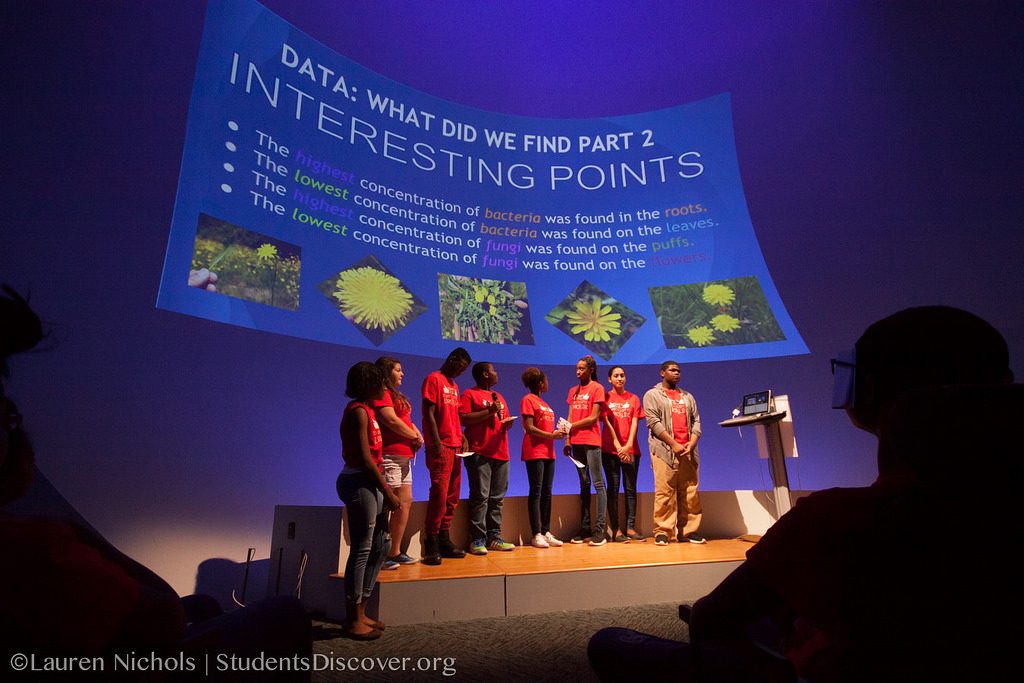
Shark Teeth Forensics is another Students Discover citizen science project, wherein students search through sediment collected from fossil sites on the east coast of the United States. Students discover and measure fossil shark teeth to capture the location of those fossils for a study of ancient shark ecology to determine preservational biases in the fossil record and reconstruct the body size of extinct sharks. Through studying shark teeth from fossil sites, teachers and students have discovered a new species of carpet shark and contributed thousands of new distribution records (papers in progress, led by Dr. Terry “Bucky” Gates). Students, it turns out, are better than adults at finding the smallest shark teeth, much to their teachers’ surprise.
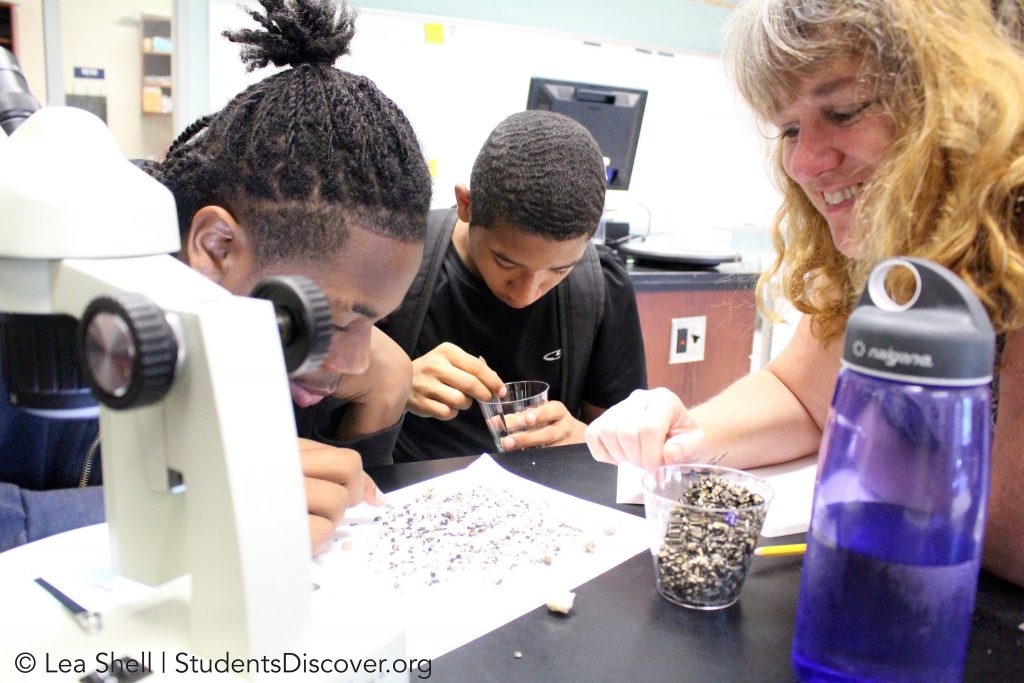
Studying the impact on students and teachers
To evaluate the development of Students Discover citizen science projects and lessons, researchers from North Carolina State University’s Friday Institute for Educational Innovation conducted field observations of the teachers and scientists throughout the three-week summer externships in July 2014, 2015, and 2016. Data were collected using an open-ended observation protocol that examined the development process, communication between project partners, the use of data, the lesson plan templates, scientists’ preparation, teachers’ presentations, notable differences between summer externship experiences, and weekly teacher feedback sessions with NCMNS support staff and museum educators. Museum observations lasted from approximately one to three hours, depending on the day, activity, and researcher, with a total of 64 observations completed. Additionally, the Friday Institute research team conducted focus groups with each cohort of teachers and semi-structured interviews with the scientists during the final week of each summer externship, resulting in 12 focus group sessions and interviews across three years. Semi-structured interviews with teachers and collaborating scientists also took place throughout 2015, 2016, and 2017 (collecting data through 43 interviews in total). Audio recordings were transcribed and open-coded by members of the Friday Institute research team using qualitative data analysis software. Researchers developed and applied codes and—in line with the consensual qualitative research model—the team met to discuss and compare the relationships among codes and the conditions that gave rise to certain concepts, and to combine similar codes/concepts into broader patterns or themes (Hill et al. 2005). The findings presented below are based on analyses of these data sources.
Several project findings emerged regarding the externship/lesson development process:
- Opportunities to experience real, hands-on science helped to engage teachers in the module codevelopment process. Doing real science with their partner scientists immediately engaged teachers at the beginning of their externship experience, and provided the model for their work. They got to experience being citizen scientists, and then began creating lessons with their partner scientists to engage students in doing real science and being citizen scientists.
- Teachers and scientists reported that mutual respect facilitated a trusting and productive working relationship.
- Effective teacher collaboration and use of technology and digital tools enhanced the module development process. Working in shared Google documents and spreadsheets was very helpful across teams as they built out lessons and linked to existing and ongoing scientific research. Some groups also used online databases for storing and accessing project data (e.g., Smithsonian’s eMammal project database, Common Online Data Analysis Platform).
- Thoughtfully and practically structuring the externship positively impacted both scientists’ and teachers’ codevelopment experience. Postexternship focus group data revealed that dedicating time for teachers to explain their school contexts and explicitly link citizen science lessons to required standards was vital to module development and (later) module implementation. Likewise, sufficient time was needed for teachers to acclimate to working in scientists’ labs. After the first externship year, both groups were assigned prework (e.g., assigned readings about each other’s roles and work), and time was dedicated to reflection and conversation around everything happening for teachers (e.g., lunch with museum education staff where teachers could ask questions and discuss their feelings about the externship experience).
- Recognizing the range of potential implementation contexts strengthened lesson development and served to protect projects and lessons from inevitable circumstantial challenges.
With regard to the implementation process, data indicated that:
- teachers’ access to the Science House was essential in procuring materials for implementation;
- working with an accommodating and supportive administrative staff improved implementation; and
- use of the Students Discover lessons proved effective in engaging students in authentic science and the scientific inquiry process. Participating teachers also reported that their students continued asking questions and, in many cases, these questions were used to build out additional lessons and instances of scientific inquiry and discovery in their classrooms.
Several findings also came to light in regards to changes in teacher practice, confidence, and perceptions:
- Educators reported increased self-efficacy and confidence in their ability to teach science. In postimplementation interviews, educators reported changes in self-efficacy and confidence.
- In some cases, educators described a newfound scientific identity as a result of their participation in the externship and the Students Discover project in general. Teachers reported feeling like scientists, not just teachers, and remarked how that newfound scientist identity impacted their approach as science teachers in the classroom.
- Numerous teachers shifted their pedagogical approach by adopting more student-centered teaching practices. Examples range from the types of instructional activities employed in the classroom (e.g., more student choice and collaboration overall, less lecture, more inquiry-based instruction, and significantly more student-driven or student-led research projects) to the setup of teachers’ classrooms (e.g., from rows with desks facing forward to clusters of desks for easier student collaboration and interaction).
- Many teachers also expressed finding fresh inspiration to foster student interest and confidence in science, especially among female students. A majority of teachers spoke about their renewed energy related to sparking student interest and confidence in science, and reported that their students actually appeared to be more confident and interested in science at the end of the year. According to many teachers, this was especially pronounced for female students.
- After participating in Students Discover, almost all teachers participated in other activities adjacent to or related to the project (e.g., leading professional development, recruiting other teachers to implement citizen science lessons, assuming new leadership roles, presenting at conferences, establishing citizen science–focused after-school clubs for students).
Finally, the Students Discover project also impacted students:
- Participating teachers reported that their students were highly engaged and appeared to enjoy doing real science, and were especially excited to contribute data to be used by scientists.
- Teachers reported that they observed evidence of students’ participation impacting their beliefs and future goals related to science after citizen science project implementation.
- Teachers also reported increases in students’ questioning ability and content knowledge.
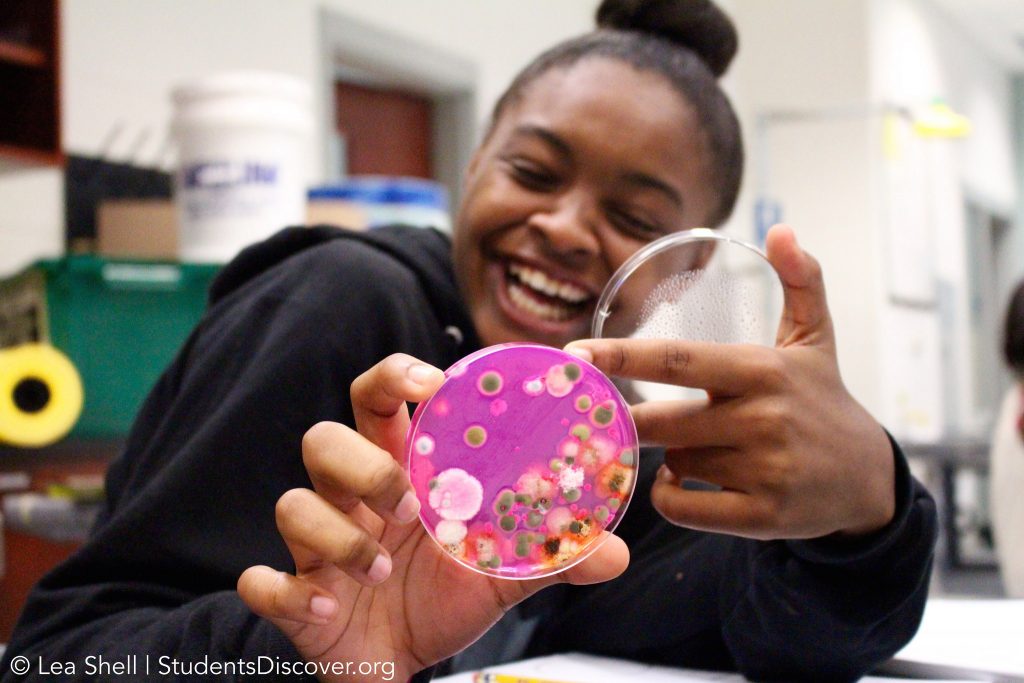
Recommendations for future work
In light of Students Discover data and project findings, recommendations for schools, districts, universities, and other educational partners interested in designing or implementing similar citizen science projects include the following:
- Professional learning opportunities that involve real, hands-on science can have an impact on teachers’ perceptions and practice. The Students Discover externship provided participating teachers with extended exposure to ongoing scientific research in laboratory and natural settings. Though teachers were already familiar with the theoretical aspects of scientific inquiry, the immersive partnership process at the North Carolina Museum of Natural Sciences gave educators more insight into the challenges of scientific practice (e.g., developing and refining research questions and foci, accepting both the unknown and failure as important aspects of pursuing answers in the hard sciences). Joining scientists in conducting research and collecting data also provided teachers with the opportunity to assume a student (or citizen scientist) role for a period of time, which in turn served as a model and helped teachers better consider the learners’ perspectives in their lesson planning and overall pedagogical approach.
- Context always matters and should be considered in the development of any professional learning experience or anything that will be implemented in a classroom or school setting. Our data suggest that in creating any product or lesson for use by teachers, alignment with standards is vital. Recognizing limited financial or material resources and planning for ways to work around potential limitations are also essential. It is important to be cognizant of school and district culture as well as anticipated levels of support from administrators and colleagues. Likewise, projects need to be responsive to cultural contexts: for example, in western North Carolina, where many students still engage in agriculture, Students Discover leaders have pinpointed projects based around crops (and the intersection of crops and technology) as a point of district engagement and planning going forward.
Plan for sustainability as often and early as possible. Citizen science project materials can be expensive. Postdoctoral research scientists take tenure track positions at other universities, museums, or labs. Teachers—even those who benefit and grow from their project experience—may leave for other positions in their schools or districts or to attend graduate school. To continue the important work of engaging teachers and students in citizen science, project leaders and partners should recruit scientists and teachers thoughtfully, assess and track costs consistently, and share successes widely with academics, practitioners, school administrators, policy makers, and the community. To build local capacity and ensure sustainability, project organizers should aim to recruit scientists who are more likely to remain in their positions (at the same department, university, lab, or museum), and teachers who are invested and also likely to remain in their classrooms or schools.
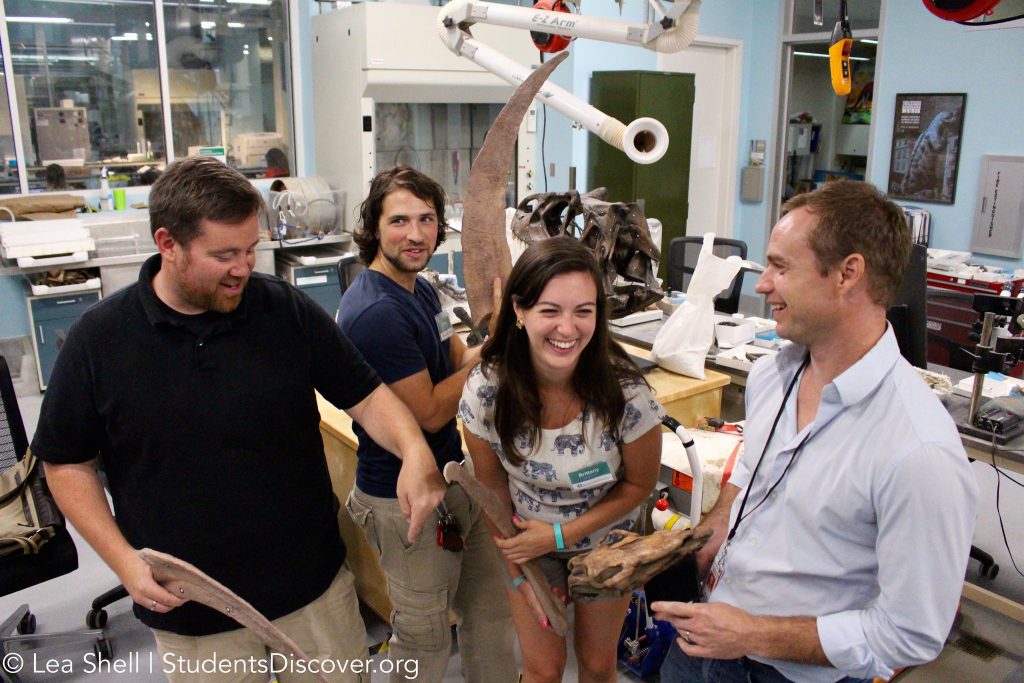
Collaboration between Students Discover teachers and scientists was mutually beneficial and fun—as seen in the paleontology research lab at the North Carolina Museum of Natural Sciences. - Genuine collaboration and mutual respect can yield positive participant experiences and exceptional products. Feedback from teachers and scientists reflected feelings of mutual respect and appreciation for collaboration from participants. Friday Institute researchers perceived a high level of engagement and effort that emerged from this collaboration and respect between teachers and scientists. Researchers repeatedly observed teachers going beyond normal project requirements, readily dedicating their time and energy to the promoting citizen science during their externship, the school year, and even after the completion of their cohort. Many teachers took the initiative to lead professional learning experiences for other educators in their schools and districts and discuss Students Discover projects with colleagues, and several teachers founded after-school clubs centered on citizen science projects. Investing in citizen science projects and healthy teacher–scientist relationships has proven to be a worthwhile endeavor for everyone involved.
Suzanne Branon (snbranon@ncsu.edu) is research associate at the Friday Institute for Educational Innovation at North Carolina State University in Raleigh, North Carolina. Sherry Booth Freeman (sherry_freeman@ncsu.edu) is a senior research scholar at the Friday Institute for Educational Innovation at North Carolina State University in Raleigh, North Carolina. Lauren Bryant (lhbryan3@ncsu.edu) is a research scholar in the College of Education at North Carolina State University in Raleigh, North Carolina. LaTricia Townsend (tricia_townsend@ncsu.edu) is a senior research scholar at the Friday Institute for Educational Innovation at North Carolina State University in Raleigh, North Carolina. Malinda Faber (mmfaber@ncsu.edu) is a research associate at at the Friday Institute for Educational Innovation at North Carolina State University in Raleigh, North Carolina.


